A gaming PC is a big investment — and in the case of a gaming desktop PC, it can be a big piece of equipment, too. That’s why consulting a comprehensive gaming PC buying guide like this one is a great way to figure out what you need and where you should focus your budget. Between your graphics card, processor, RAM, and storage, there’s a lot to consider, but not all of it requires the same level of investment. That’s why we’re here to show you how to buy a gaming desktop.
Putting together a gaming rig for the first time is daunting, but it doesn’t have to be difficult. As long as you know what to look for and where to look for it, you can buy the pre-built gaming PC of your dreams or even build your own gaming rig. Either way, with our know-how, you’ll surely end up with a gaming PC that fulfills all your wants and needs.
How big a PC do you want?
Most gamers start with the hardware inside a computer. We’ll cover that soon enough, but before we get there, let’s talk about the overall build’s shape, size, and form factor.
Gaming computers now come in many shapes and sizes. There are small systems such as the Alienware Aurora 16, monstrously massive systems like the CLX Hathor, and a wide range of options in between.
Small systems can be incredibly compact and unobtrusive, and fit where larger systems simply can’t. They’re ideal for gamers who lack a large desk or want to use the PC in a home theater. Going small can limit future upgrade options, however, and some pint-sized PCs make a lot of noise due to their limited space for cooling. They’re usually based around the Mini-ITX form factor, so they require motherboards and cases of that same specification.
Mid-towers are a good compromise and are ideal for most people. They’re small enough to fit under, on, or in a typical desk, yet large enough to offer upgradability and acceptable cooling. You’ll need to pay a little extra for glass side panels and fancy color schemes, but you’ll already know whether that’s something you care about. These tend to be based around Micro-ATX or ATX designs, so you’ll need a motherboard and case compatible with those design specifications.
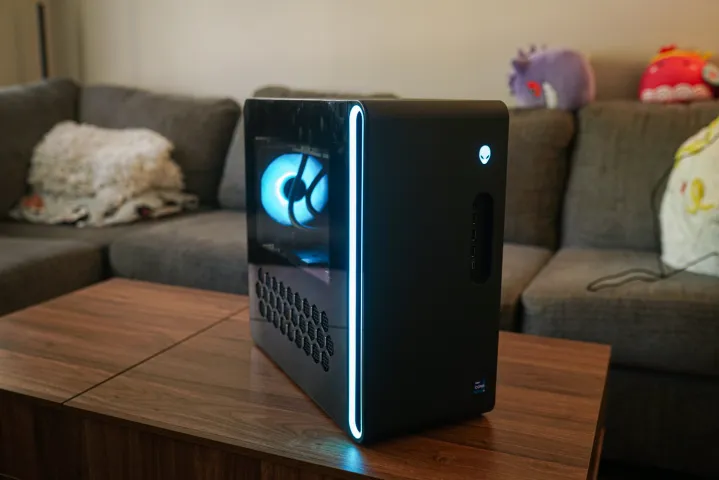
Finally, we come to the monoliths known as full towers. These are often placed under the desk rather than on it due to their sheer size, but that’s not always the case.
A full-tower system may carry a slight price premium over a mid-tower. But they are exceedingly easy to work with because they have enough space for anything you want to put in them, including your hands, which can be super helpful if you have large mitts.
Some custom manufacturers, such as Origin and CyberPower, offer a selection of cases during customization. A full tower is the easiest to grip and work with, but make sure you know its dimensions beforehand. If desktop space is important, but you’re not totally comfortable working within a cramped area, opt for a mid-tower.
There are smaller options, but they are harder to modify, typically louder, and don’t necessarily support all of your hardware choices. Furthermore, small form factor cases get hot, so keep that in mind if you plan on running demanding games or if you want to venture into overclocking.
The processor makes a big difference
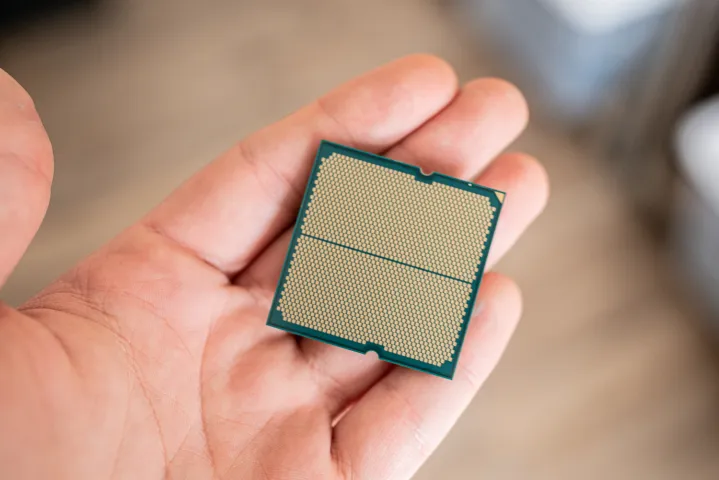
When you buy a gaming desktop, whether it’s one you built yourself, a custom gaming rig, or a premade model from Dell or HP, the processor will be the first specification you see — and for good reason. The processor determines how a system will perform in most software.
The processor core count is a major consideration. Options range between two and 24 cores in the mainstream space. For the tightest of budgets, a four-core chip should be as low as you go, as you really need at least that many for baseline performance in most modern games. Fortunately, you can get super affordable CPUs like the Core i3-12100F or AMD Ryzen 5500 if you want a cheap PC for casual gaming.
For more powerful (and expensive) builds, there are some amazingly affordable mainstream CPUs in 2024. The AMD Ryzen 5800X3D is still a great last-gen option, though newer 7600X and 7800X3D models offer greater performance and more upgrade potential for the future. Intel’s Core i5-13600K is an amazing CPU, although it uses a lot of power.
Check out our best Intel CPU and best AMD CPU roundups for more in-depth information.
When it comes to AMD vs. Intel, AMD tends to offer better value throughout the pricing spectrum, as well as much better efficiency. Its x3D CPUs hold the gaming crown, for now, although Intel’s ultra-budget chips tend to be more impressive. Intel’s CPUs also offer a better blend of productivity and gaming, so if you want to do both, then Intel’s CPUs might be a better choice.
For a deeper dive into the best bang-for-your-buck CPUs, check our in-depth guide.
A powerful graphics card is a must

When building or buying a gaming PC, the graphics card is where you should pay the most attention. It’s the component with the biggest hand in beautifying your games, spitting out high frame rates, making it possible to play higher resolutions, like 4K, and enabling higher-end visual features, like ray tracing.
Model numbers tell you much of the story here, with higher numbered cards typically meaning more performance, though there are some caveats there, and overclocked models from third-party GPU partners can close performance gaps between versions. The RTX 4070 Ti is faster than the 4070 but not as fast as the 4080, for example.
For casual gaming at 1080p, affordable graphics cards like the Intel A750 or AMD RX 7600 are great buys, while you’ll want something like the RX 7800 XT or Nvidia RTX 4070 for playing at 1440p. For 4K you’ll need to spend big, as the top cards from AMD and Nvidia, like the RX 7900 XTX or RTX 4090 cost north of $1,000 at the best of times, and closer to $2,000 in some cases.
Although higher-end cards show diminishing returns — the “sweet spot” is around $400-$500, where the RTX 4060 Ti and AMD RX 7700 XT sit — they will still show performance scaling in most games. That doesn’t necessarily mean you should spend more on a GPU, however. It’s important to consider the game you want to play before setting a GPU budget.
It’s generally a good idea to opt for newer cards, which in this case are Nvidia’s GTX 30-series and RTX 40-series GPUs and AMD’s RX 6000 and RX-7000.

Video memory (or VRAM) is often confusing in graphics cards. It’s easy to determine how much system RAM you need, but GPUs are a little harder to determine. You may find yourself with a choice between two cards that are similar but offer different VRAM amounts. More VRAM does not have a significant impact on overall performance by itself, but it does allow a video card to handle certain visual features better and is a must for higher resolutions. Newer games are also starting to demand more than 8GB at a minimum, so you’ll want to buy a card with more if you’re upgrading in 2024 and want to play the top AAA games in the coming years.
If you’re stuck choosing between AMD or Nvidia, the latter has better ray tracing support on its RTX 30-series and 40-series GPUs, but that’s not a great reason to buy in. The current list of games supporting ray tracing is growing all the time, but it’s far from universal and not a feature you really need to enable. Nvidia’s Deep Learning Super Sampling (DLSS) tech can greatly improve performance, but AMD and Intel also offer FSR and XeSS upscaling options, which are comparable, if not quite as impressive.
Both companies’ drivers offer input lag reduction software and image sharpening for improving the look of your games.
For more tips on GPU buying, check out our guide to the best graphics cards.
Don’t waste money on unnecessary RAM
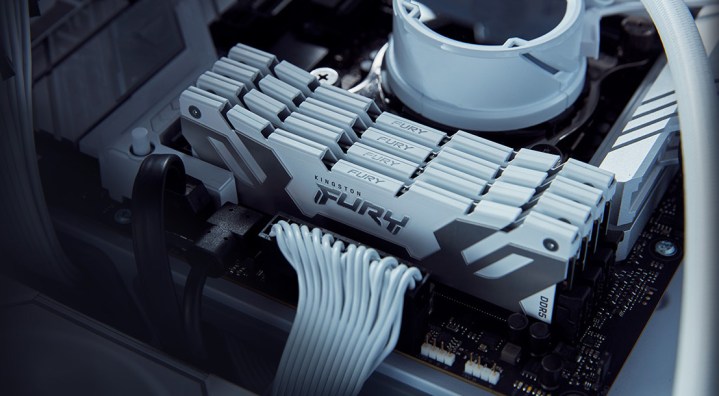
We’ve tested gaming PCs with up to 64GB of RAM, and it’s completely wasted. Even in the most demanding of sim games, 32GB is plenty, and most gamers can get by with 16GB.
Memory is one of the easiest things to upgrade later — and one of the most affordable. So just get enough for now, and get more later if you need to.
But keep this in mind: System memory isn’t only used by games. Everything running on your PC requires memory, from the operating system to your mouse and keyboard drivers. If Destiny 2 alone uses 6GB of system memory while it’s running, you need ample memory available for everything else. This is why developers recommend higher amounts, so your PC has room to breathe while the game remains active.
The only instances where more than 32GB of RAM will benefit you are productivity applications like video editors. There 64GB and more can still be useful, so look up your particular app in question to see what you might want to get to accelerate some of its functions.
Make sure your configuration comes with at least two sticks. Some gaming desktops advertise 8GB of RAM but only include a single 8GB stick. Two sticks will allow you to take advantage of dual-channel memory on most motherboards, which effectively doubles the data transfer speed versus a single stick.
You also probably want to be using DDR5, as it’s more future-proofed and offers better performance, but if your gaming PC pre-build comes with DDR4, it won’t make a huge difference, and you can either upgrade it later, or that’s the fastest your system can support anyway.
SSDs are (almost) all you need
Most computers sold today come with a small NVMe SSD and either a larger SATA SSD or an older hard drive for longer-term storage. With the low price of SSDs today, you don’t need to really be concerned about using hard drives outside of massive video and photo storage. For game libraries, Windows installations, and more, SSDs are affordable and offer much better performance.
A 512GB SSD is enough to store Windows and most of your games, and it will make a huge difference to how your PC feels and how fast your games load. But you can get larger 1TB, 2TB, or even 4TB models that offer better performance and much more storage space for your game libraries. They should also last longer, with much higher TBW (terabytes written) ratings.
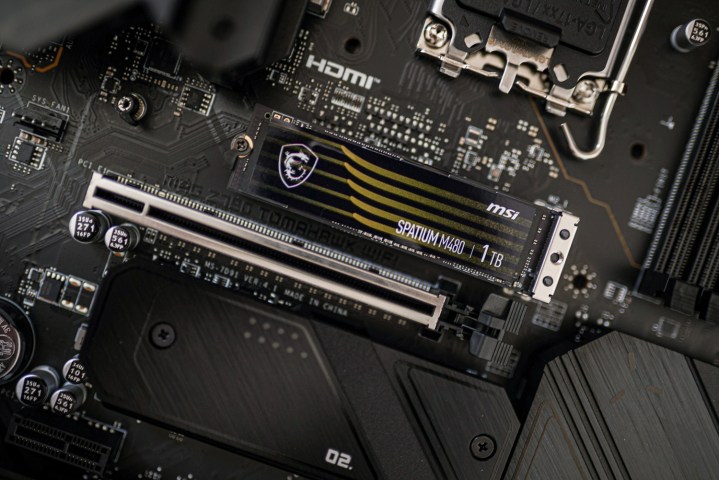
With a decent SSD under the hood, Windows should boot and be ready to use in under 30 seconds. Most modern games should load in 10-20 seconds, though heavier sim titles might take longer on slower SSDs.
Most modern SSDs are based on the slim M.2 NVMe standard, though there are also some older 2.5-inch SATA drives around, which are still useful for larger, more affordable SSD storage drives. They use a SATA 3.0 connection to transfer data, just like traditional hard drives, and require external power from the power supply.
M.2 SSDs slot into the motherboard and are typically a little more expensive than their 2.5-inch counterparts — much more expensive at larger capacities. The “M.2” part refers to the form factor, which is a small stick that slots into your motherboard (see the image above for reference). The “NVMe” part refers to the drive using PCI Express instead of SATA for data transfer. PCIe can support much more bandwidth than SATA, making M.2 NVMe drivers faster than their 2.5-inch counterparts.
Not all M.2 drives use PCIe, however. They can use PCIe or SATA, depending on the specification. Ensure the drive is marked with “NVMe,” like the Samsung 970 Evo drives above.
Whichever drive you buy, make sure the SSD you choose as your primary storage device contains the operating system. You’ll benefit from quick boot times and fast operation in day-to-day use. This is also why we don’t recommend an SSD with less than 256GB of space. With Windows installed, a small drive can only contain a handful of games.
If you need lots of storage space for media or work, consider a secondary hard drive for additional space, with the SSD for Windows and games only.
Cool and quiet
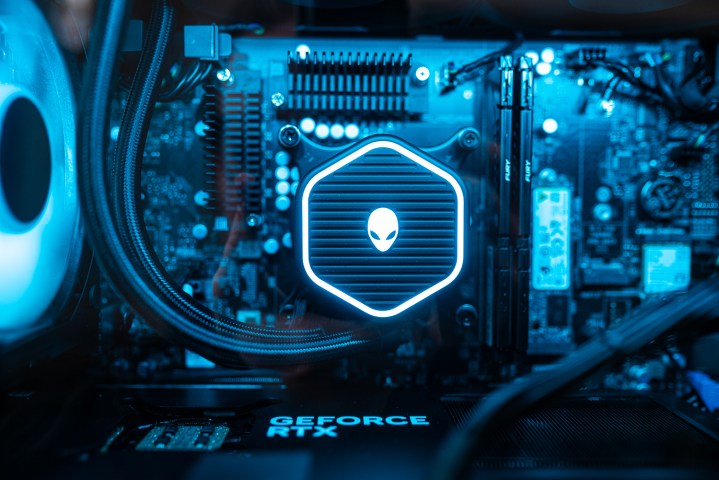
Cooling isn’t directly related to performance, but it can have an impact, as well as the enjoyment you get from your PC. Most AMD CPUs and all graphics cards ship with coolers right out of the box, so if you don’t care about noise levels or keeping components cool for overclocking, you don’t need to think any more about it — especially if you play with headphones on, where noise isn’t as important.
You can find a reasonable solution for CPUs that don’t ship with a cooler for around $30. If you want a whisper-quiet PC and/or want to push it beyond its basic specifications, though, thinking about advanced cooling is a good idea. Big air coolers are some of the most affordable and efficient ways to cool a CPU, though all-in-one water cooling and custom loops are an option, too.
Graphics cards are a little more complicated, though you can water-cool them. We recommend simply buying a third-party card with a decent custom cooling solution to enable lower noise levels and better performance.
Quality power is important
There are some components that we would recommend you spend a little extra on to get the quality you need. A good power supply (PSU) is a prime example, and we have a list of the best PSUs you can buy on various budgets.
Never buy a poor PSU; a cheap one can die and take other components with it. The first thing to consider is your wattage. Select a PSU that exceeds your PC’s required wattage by quite a bit, but you don’t need to go crazy (a 650w PSU is perfect for a build rated for 400w, for example).

After, look for an 80 Plus certification. The 80 Plus standard rates PSUs based on their power efficiency, and there are multiple tiers. 80 Plus certified PSUs, for example, are 80% power efficient at average power draw, while 80 Plus Titanium PSUs are 92% power efficient in that same wattage range.
The 80 Plus certification simply makes a statement about power efficiency. However, PSUs with an 80 Plus rating generally use better components to earn that rating and deliver the advertised wattage.
Finally, you’ll find modular, semi-modular, and non-modular PSUs. Non-modular power supplies have all of the cables attached to the PSU itself. Semi-modular PSUs have some essential cables attached — such as your motherboard’s 24-pin power connector — but give you detachable cables for other components, such as 8-pin power for your video card. Lastly, modular power supplies come with all the cables detached.
The upside of a modular PSU is that you only need to plug in the cables you’re actually going to use, making building and cable management much easier. However, modular PSUs are expensive, sometimes twice as much as their non-modular counterparts. You can save big by opting for a non-modular PSU.
Choosing a motherboard

Bringing everything together is your motherboard. You don’t want to cheap out here, but you don’t need to go too expensive, either. There are two aspects to consider: the socket and the chipset. Thankfully, the former is easy. Every processor is manufactured to fit in a certain socket — Ryzen 5000 processors use the AM4 socket, while Intel 14th generation uses LGA 1700, for example — so you need to make sure your CPU fits the socket on your motherboard. If you’re buying a prebuilt machine, you don’t need to worry about the socket.
The chipset is more interesting. Both AMD and Intel offer different chipsets with different features targeting different prices. For example, Intel’s flagship Z790 chipset supports overclocking, while the cheaper H610 chipset does not. Similarly, AMD’s top-end X670E chipset has more PCIe lanes than the cheaper B650 chipset.
Frankly, there’s almost too much to consider between chipsets. For gaming, the important question is if you want to overclock your processor. AMD supports overclocking on its X- and B-series chipsets, while Intel only supports overclocking on its Z-series chipsets. Otherwise, your motherboard will have almost zero performance impact.
There are considerations outside of performance, however. Manufacturers will include different features on their motherboards, such as better networking capabilities or a better sound chip. Furthermore, motherboards come with different levels of expandability (some may come with only two RAM slots, for example). You don’t need to spend a lot on your motherboard, but you should consider overclocking support, expandability, and other features like networking and sound.
Focus on what matters to you
When setting up your gaming desktop, remember that your gaming ecosystem is a careful balancing act. You have to figure out what you prefer and want from your overall gameplay experience and then invest in the resources to make that happen.
If you’re struggling to organize a budget for this, we recommend investing the majority of your budget in the graphics card and the CPU. Those features will make the biggest difference in improving how your game visually looks. From there, reliable and ample storage will make the game run and load faster. While a sleek design or fancy case would look nice, it won’t affect your in-game experience. More memory has its place, but if it’s more than you can use, it won’t do much.
Keep in mind that this investment is entirely up to you, so build a PC that works for you. If how your PC looks matters to you, then trick it out. Light the PC up and make it look incredible. If you’d rather tweak and overclock, spend some money getting a nicer motherboard and a decent cooler. We recommend spending the bulk of your money on features that will ultimately improve your device’s gaming functions, but the PC should also fit your preferences.
Editors’ Recommendations

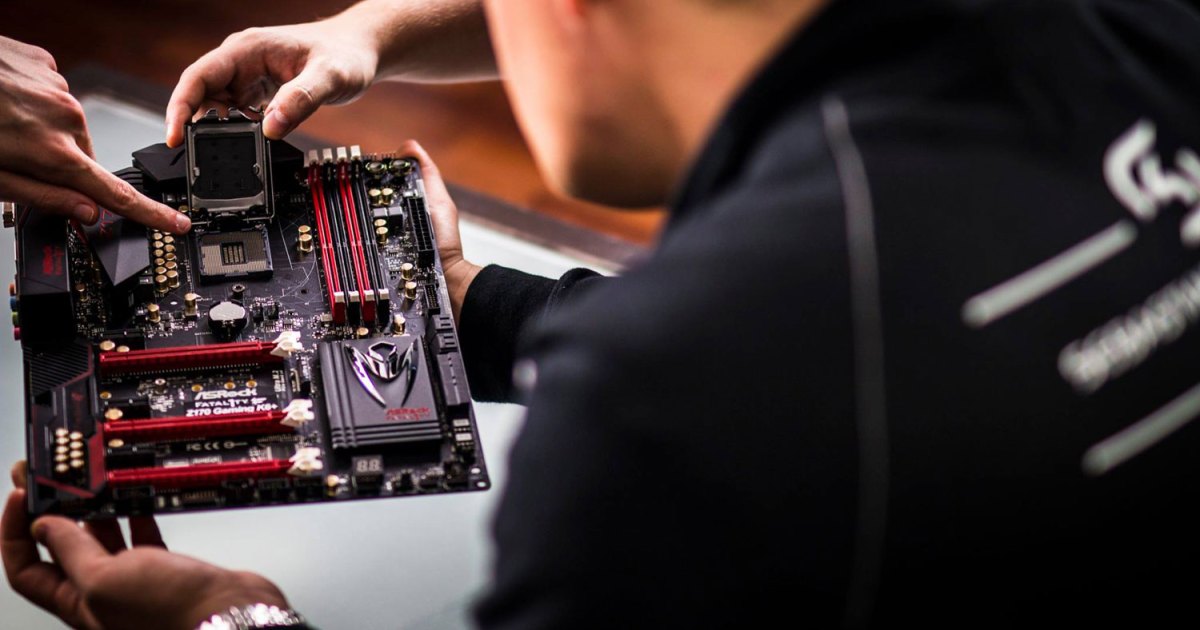



)

